At the turn of the 18th and 19th centuries, the need for Hungarian officer training was discussed several times, but this idea was resisted for a long time in Vienna. For the first time, the 1808 Diet decided on the establishment of the Hungarian officer academy, which was also approved by the monarch. In the multi-volume work entitled Magyar Törvénytár (Corpus Juris Hungarici), the article on the foundation of the academy defines the goals as follows:
"The main goal of this academy is to educate the Hungarian youth in the sciences by means of which they will be fit and able to serve their country usefully both in the regular army and during an uprising.."
The first point of the law designated the building of the Theresianum in Vác as the location for starting the training. The supervision of the institution was provided by the king, who also assumed responsibility for the formation of the officer corps. It was named after Queen Consort Maria Ludovika, the wife of King Francis I of Hungary, who supported the establishment of the academy with a truly significant sum of 50,000 HUF.
The Ludovica building in 1845, drawing by Rudolf Alt (Source: Budapest, October 1979 issue)
This decision was confirmed a few years later, in 1827, with another article of law, in which a decision was made to build a new building in Pest.
"That the mentioned academy, since it has a sufficient physical basis, should be set up in the city of Pest without any further delay; and the building of the former Teréziánum in Vác, which was intended as its premises, together with all the funds belonging to it, should be sold as fruitfully as possible to increase the foundation of the academy."
Palatine Joseph, one of the most ardent supporters of the cause, asked the most famous architect of the time, Mihály Pollack - who later designed the Hungarian National Museum - to prepare the plans for the new building, the location of which was designated next to the Orczy Garden. To solve the task with the greatest possible expertise, Pollack was commissioned to study the military academies in Vienna and Wiener Neustadt.
The foundation stone of the building was laid in 1830. In 1832, the scaffolding of the main facade was demolished, and four years later, at the end of 1836, Pollack submitted the final architectural report. The huge building was surrounded by riding stables and a well-kept garden.
The Ludovica building on a contemporary drawing (Source: Vasárnapi Ujság, 28 April 1872)
The facades of the building with an inner courtyard were divided by Corinthian pilasters and central and side risalits closed with a tympanum. The symmetrical, imposing building was one of the most important buildings of the era, despite this, it was almost completely unused for 36 years, and when it was used, it was not according to its original purpose. It is also known from the Vasárnapi Ujság article written on 28 April 1872, what obstacles stood in the way of opening the institution:
"The building was completed in 1836, but it remained empty, although its financial base also went to 800,000 HUF, in which the capital of the foundations providing education for 69 young people at the expense of the institute was included. But it remained empty because, according to the law of 1808, the institute should have been under the supervision of the Palatine, who would have been authorised to recommend to the king for appointment the teachers to be paid from the royal treasury; and the Houses of the country demanded that the teachers teach in Hungarian, and the debate over this issue delayed the opening of the institute year after year."
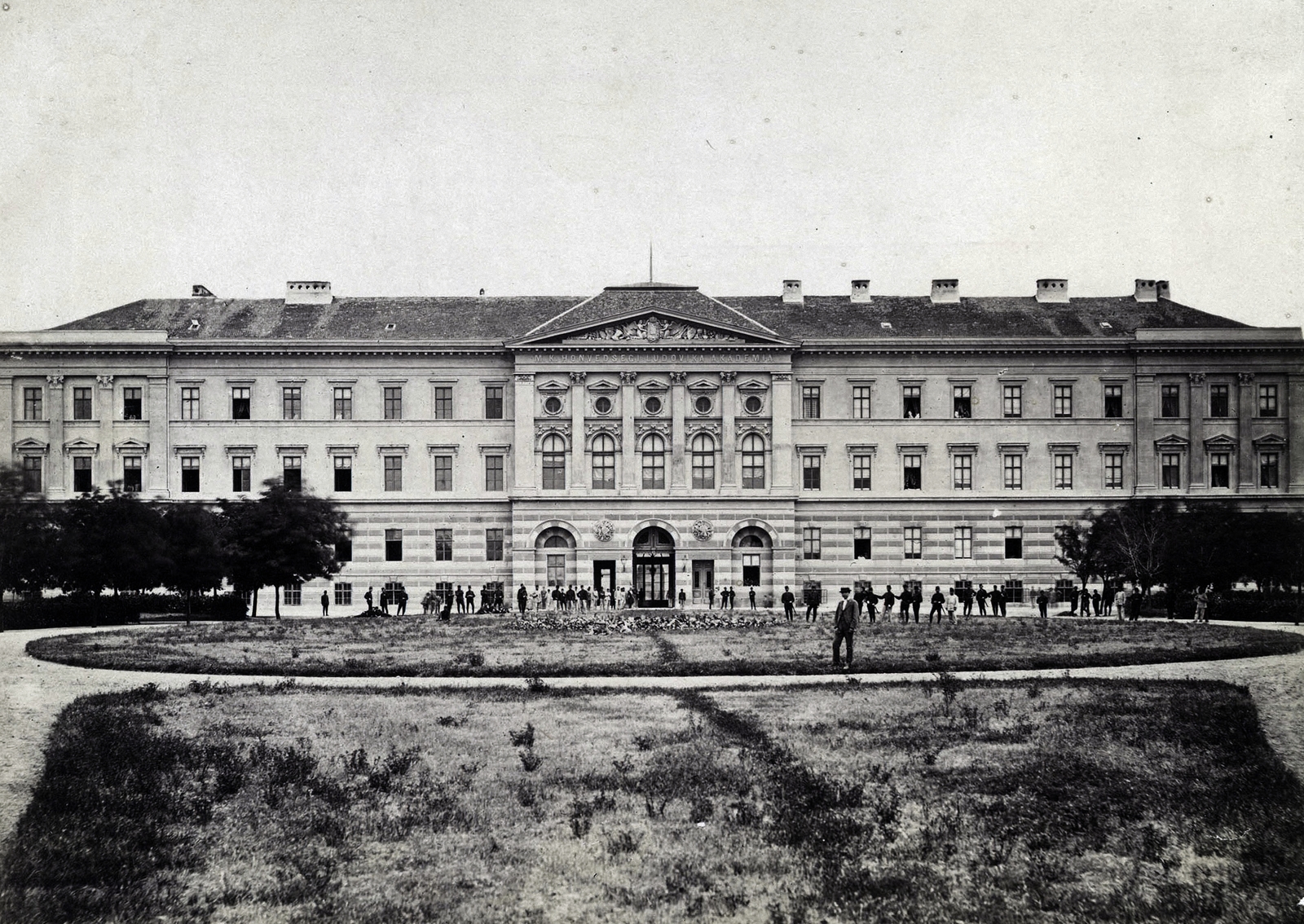
The Ludovica Academy building at the end of the 19th century, the picture was taken between 1880 and 1890 (Source: Fortepan/No.: 82225)
During the great flood of 1838, the building was not damaged due to its higher location and even provided protection to the people. After 1849, soldiers were accommodated in the training rooms, and then a military hospital was also established there.
After the Compromise of 1867, it was repeatedly said that the Hungarian officer cadet training academy was needed. It seemed almost unbelievable, but finally, the old dream could come true: according to Article 16 of the 1872 law:
"According to Articles 7 of 1808 and 17 of 1827, the Hungarian military institute ordered to be set up in Pest will be set up as the Royal Hungarian Ludovica Defense Academy and will be called the Ludovica Academy."
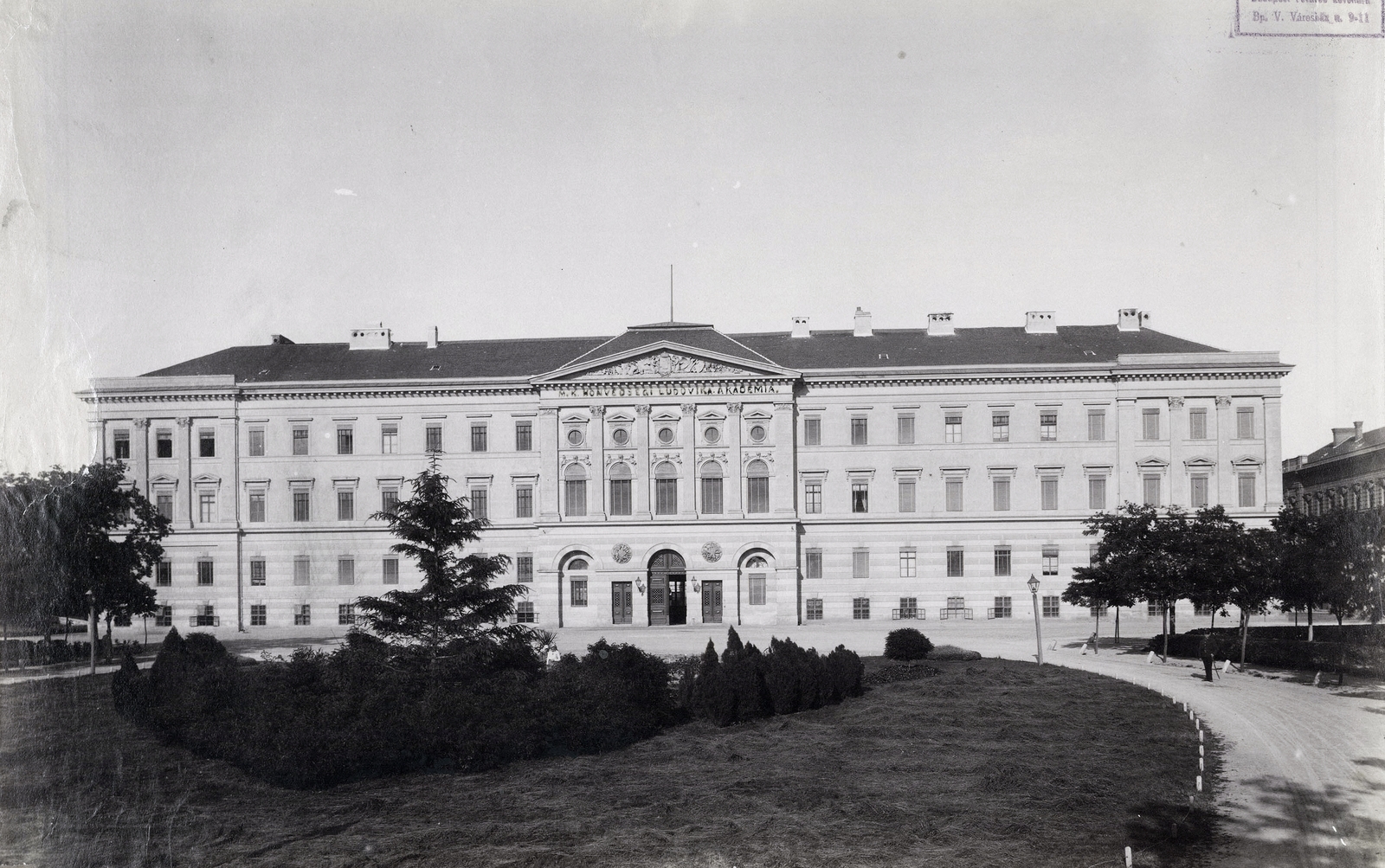
A photograph of the Ludovica Academy building from the end of the 19th century (Source: Fortepan/No.: 82422)
The opening of the institution was a joyful event. On 29 March 1872, the first Hungarian military weekly, A Honvéd, wrote enthusiastically about the Ludoviceum, which opened in the fall.
"After a lot of waiting, urging and countless repetitions of the loud expression of public opinion, we finally lived that the Ludoviceum building and the capital of the foundation understood under this name will be used to provide Hungarian youth with military training in the Hungarian spirit."
The interior of the riding hall in a photo from 1920 (Source: Magyar Múzeumok, Issue 4, 1996)
In the 1880s, a four-story wing building was erected towards Üllői Road, and in 1893 it was expanded with an independent fencing hall and smaller facilities. From Alfons Danczer's book Our Army [A mi hadseregünk], published in 1889, it is also known what interior rooms the Ludovica building had:
"The academy itself is a very beautiful building and has spacious teaching-, sleeping- and dining rooms, gymnasium, fencing and dance rooms, a riding hall and a swimming pool, as well as other useful equipment, and is richly and similarly equipped as the training institutes described for the common army."
Ludovica Academy's celebration in the Orczy Garden in honour of Franz Joseph. The king and his entourage are making an inspection. The recording was made on 12 June 1896 (Source: Fortepan/No.: 82804)
So, in 1872, planned officer cadet training began. In the beginning, only voluntary young people between the ages of 14 and 16 were taught within the walls of the institution. After the four-year training, they could join the army with the rank of officer cadets. The two best students were appointed lieutenants by the king.
"At Ludovica, military subjects were in the foreground, little attention was paid to increasing general literacy. There was no political education in today's sense, and of course, there was no mention of progressive movements, workers, or agrarian issues either, meaning that the most pressing problems of the time were neglected."
- wrote military officer Gyula Kádár, who was himself a student of the Ludovica Academy, in the Budapest magazine in 1979.

The millennium celebration of the Ludovica Academy in the presence of the king, Franz Joseph. The recording was made on 12 June 1896 (Source: Fortepan/No.: 82800)
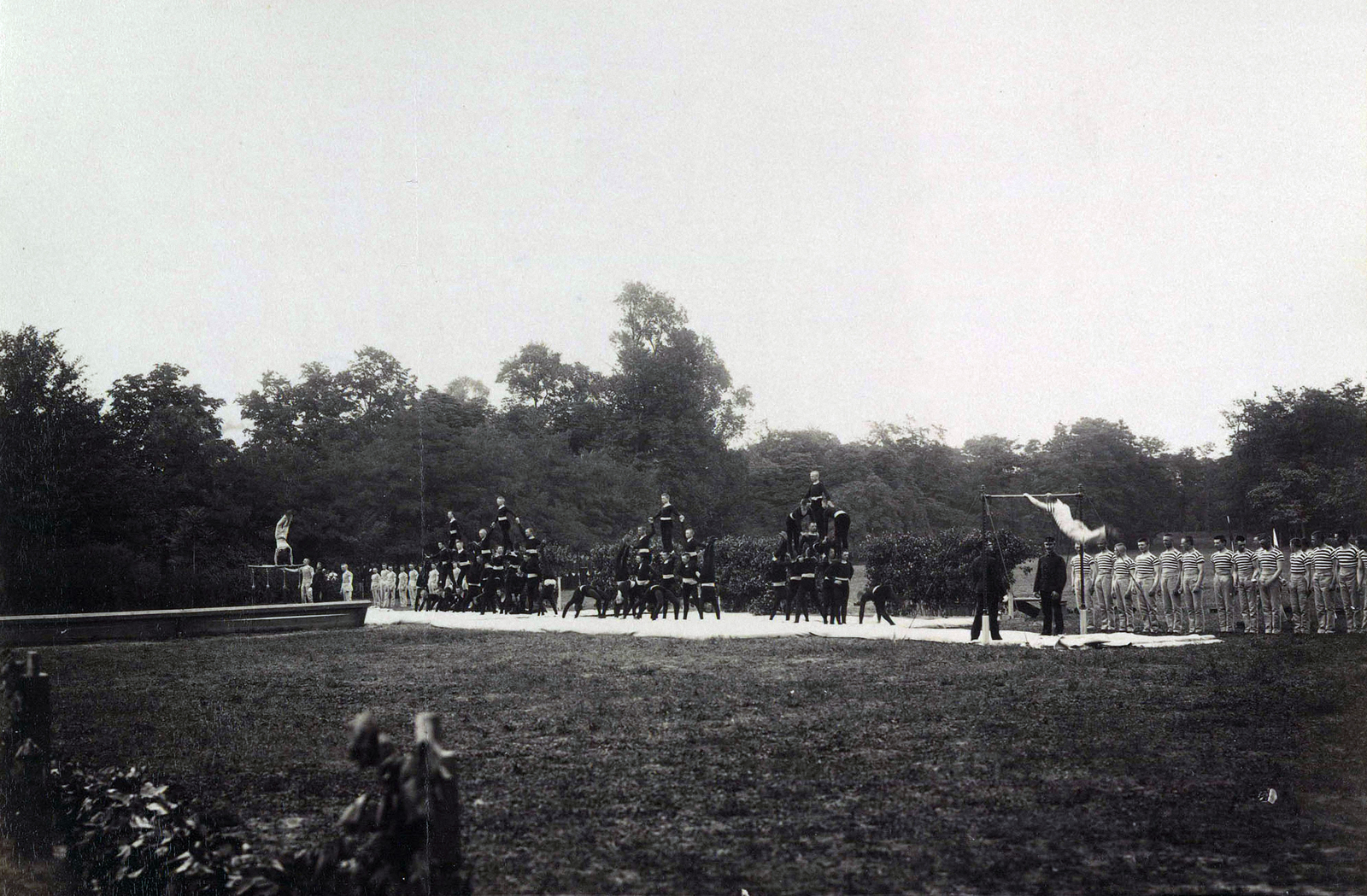
The students' presentation at the millennium celebration (Source: Fortepan/No.: 82806)
Applicants to the school were obliged to take a mandatory medical and sports examination, as well as a theory test. It is interesting that during the period when Ludovica was opened, the military was not considered a "prestigious" career, so only a few applicants of aristocratic and noble origin wanted to be admitted to the institution.
Officer cadet training continued undisturbed within the walls of the building until 1914, which was ended by the outbreak of World War I. The duration of the training was reduced from three years to two years. Due to premature appointments, the academy was almost completely empty by 1916, and the future generation of students was also a problem, as only men over the age of 18 could apply for training. The war created a serious situation, so for the 1916/17 academic year, even 17-year-olds could apply for one-year training.
The passing-out ceremony of the Ludovica Academy. The event was held on 20 August, Saint Stephen's Day (Source: Budapest, October 1979 issue)
After the Treaty of Trianon, the system of Hungarian officer training changed. Article 33 of the 1921 law was about the elaboration of the peace treaty concluded on 4 June 1920, Article 104 of which stated that the number of the Hungarian army could not exceed 35,000. Only one institution providing officer cadets could remain, and it was the Ludovica Academy, which rose to the rank of a college in accordance with Article 10 of the 1922 law:
"The professional officer cadets of the Hungarian Royal Army are trained in a four-year, full-service military college: the Royal Hungarian Ludovica Academy in Budapest. The other military officer training schools as such have ceased to exist, and are dealt with by Article 44 of the 1921 law."
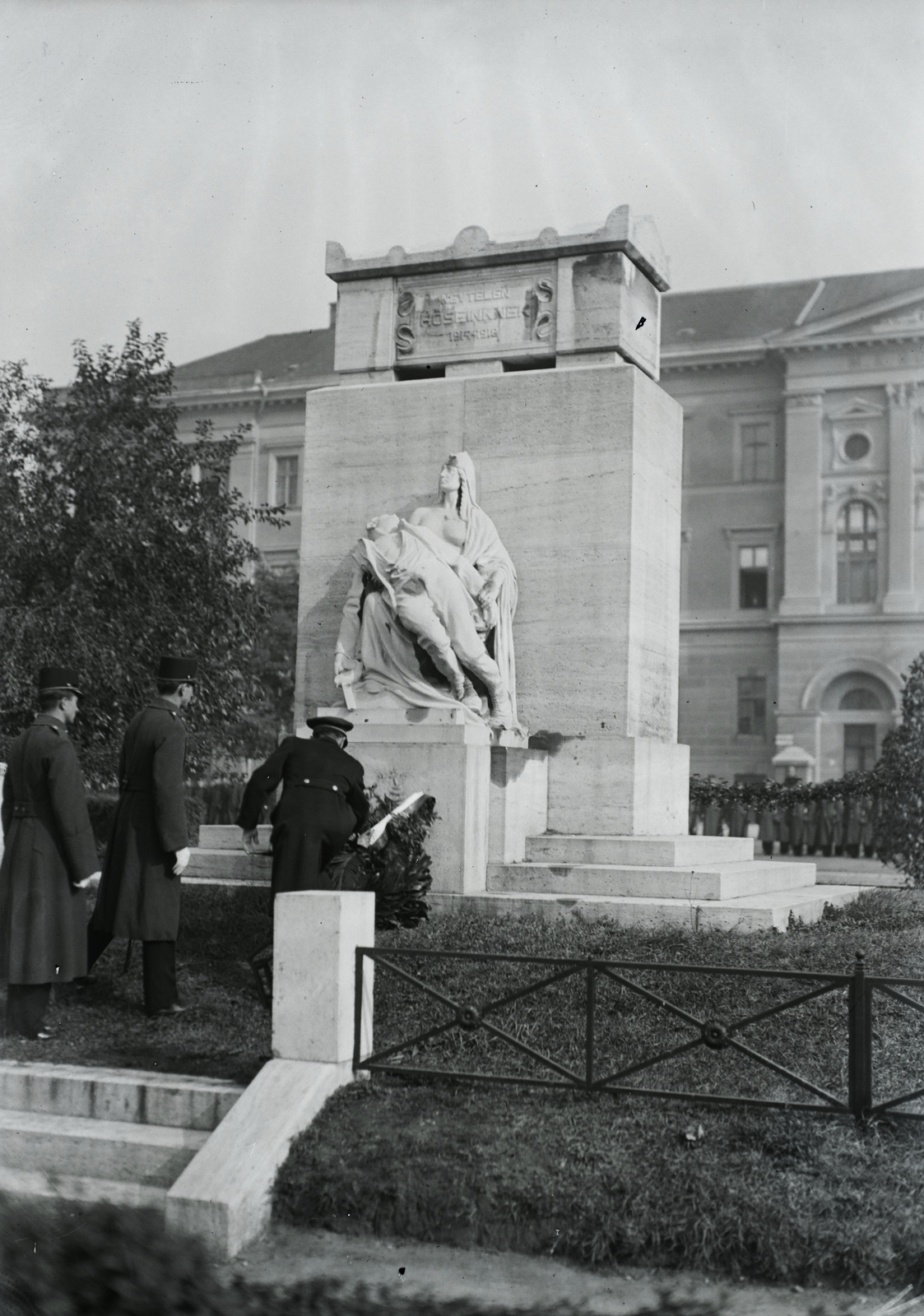
Sculptor János Horvay created a statue in memory of the soldiers who died in World War I, which was unveiled on 25 May 1924 in Ludovika Square (Source: Fortepan/No.: 132631)
During World War II, the same scenario took place in the institution as during World War I: between 1943 and 1944, the training period was reduced to two years, and then the young people received an even faster 14-month training. In the fall of 1944, the institution was moved to Körmend, and in 1945, its operations in Hungary were terminated and relocated to Germany, and then the academy was dissolved on 25 April 1945.
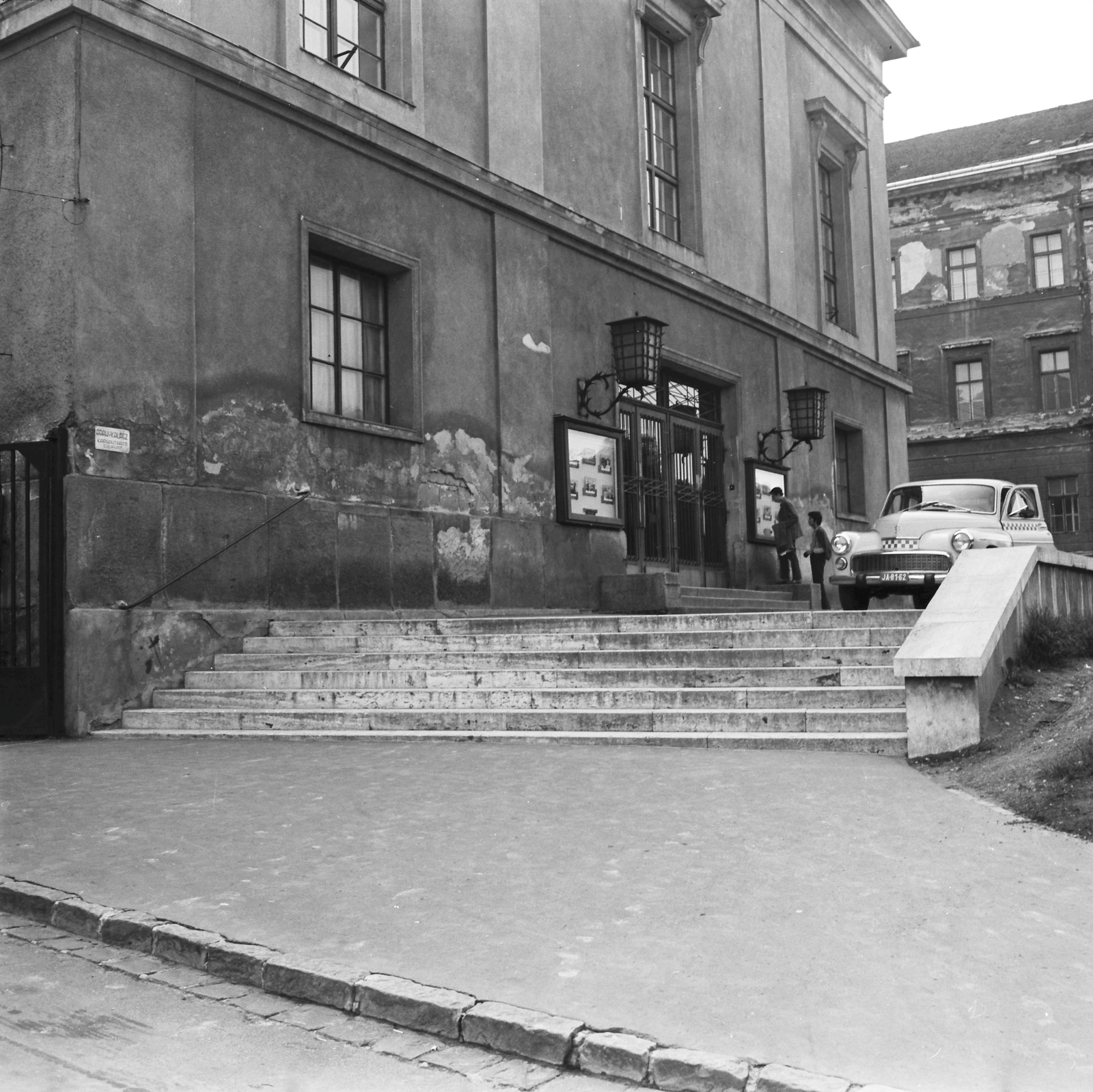
The Alfa cinema operated in the building of the riding hall. The photo was taken in 1971 (Source: Fortepan/No.: 252960)
Several departments of the Faculty of Science of ELTE were placed in the main building looted during the siege, and the Bem József High School was located in the wing building. And in the building of the riding hall, a cinema called Alfa was created, which operated until it burned down in 1992.
After the change of regime, what to do with the very dilapidated Ludovica building was again on the agenda. Minister of Culture Ferenc Mádl suggested that the collections of the Hungarian Natural History Museum be moved into the building, which was confirmed by the 1994 legal decision. Under the decision, the riding hall was restored, the museum's permanent exhibition was opened in its basement, and warehouses were created in the attic.
The National University of Public Service was opened in 2014 in the former buildings of the Ludovica Academy - next to the Natural History Museum.
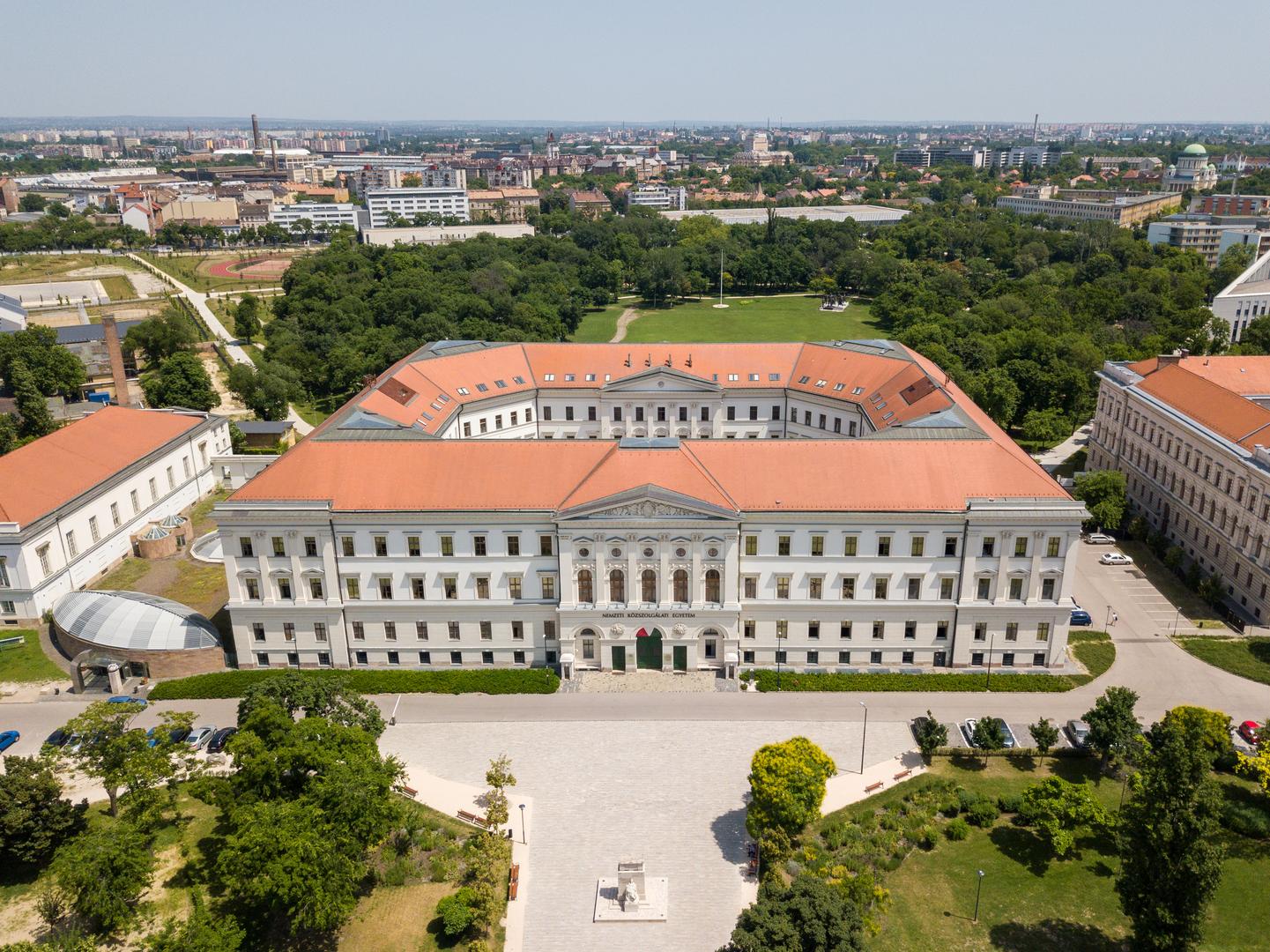
In the centre is the main building of Ludovica, and on the left is the building of the Hungarian Natural History Museum (Source: ludovika-campus.uni-nke.hu)
Cover photo: In the centre is the main building of Ludovica, and on the left is the building of the Hungarian Natural History Museum (Source: ludovika-campus.uni-nke.hu)

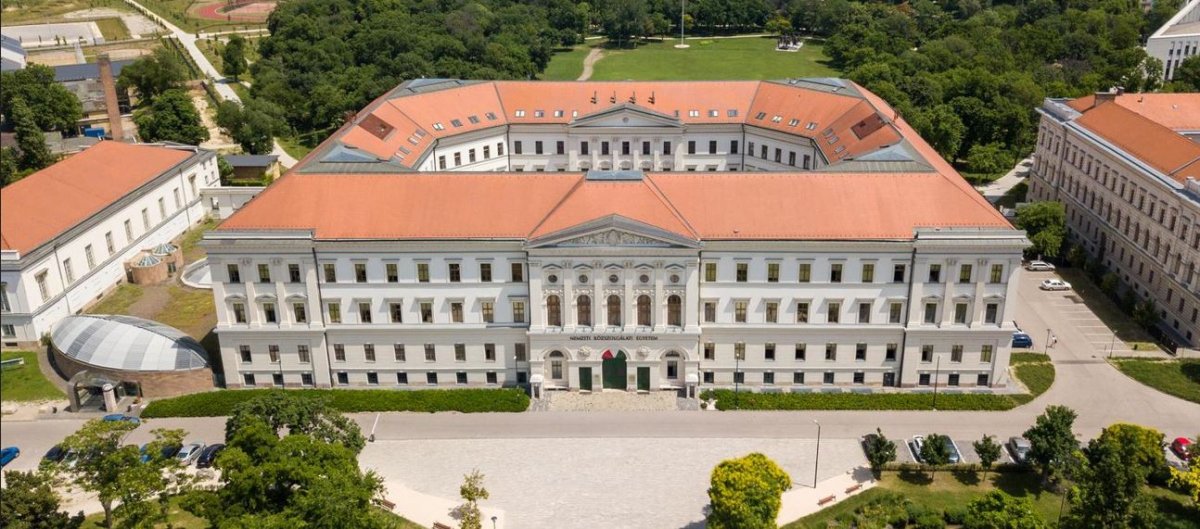


































Hozzászólások
Log in or register to comment!
Login Registration